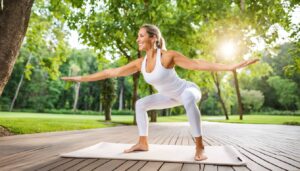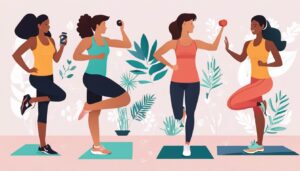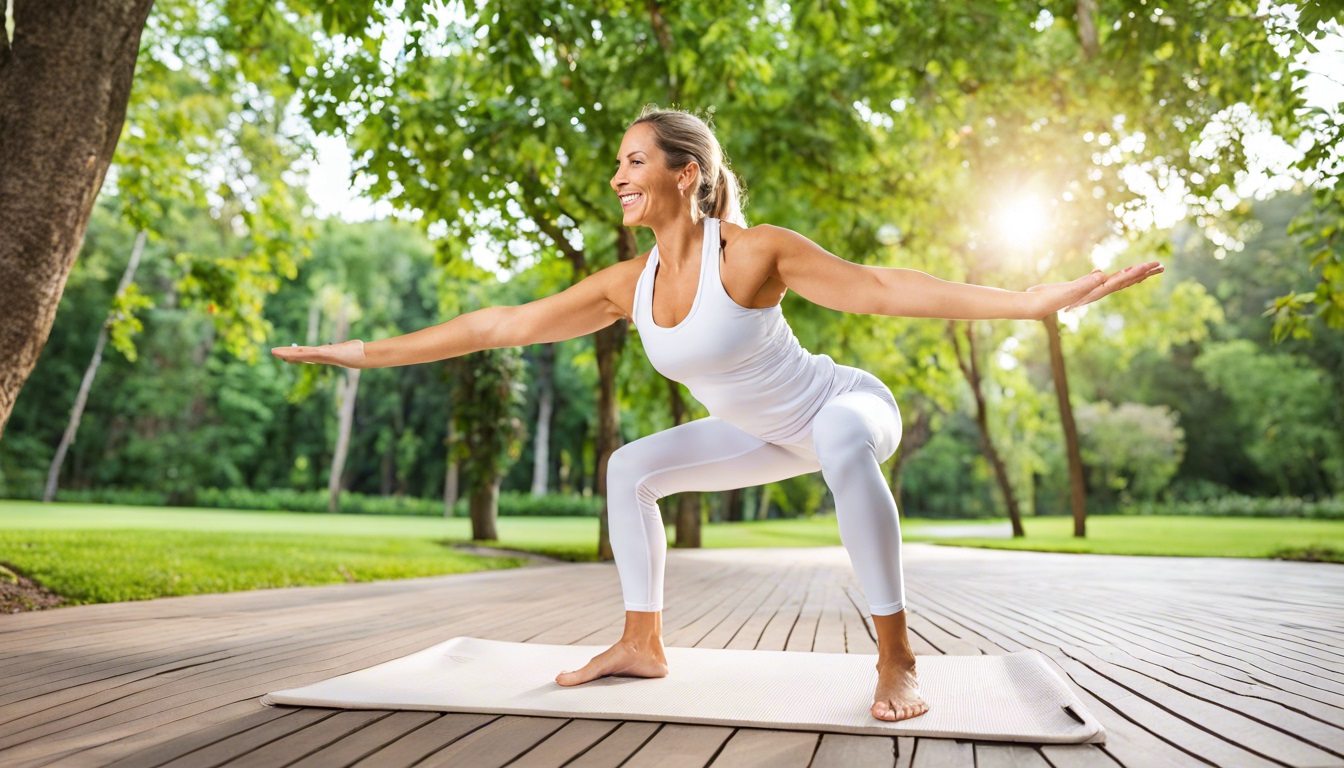Understanding Load Path, Curves, and Arches in Architecture and the Human Body
When architects set out to design buildings, they carefully consider the load path – the route that the weight of the structure will take from top to bottom. It is crucial for the foundation to be sturdy enough to support the building above, and each floor must bear the weight of the floors above. The alignment and strength of building materials are also key factors in ensuring the building’s stability and preventing collapses.
Similarly, the human body has its own natural load path that starts at the head and flows through the spine, hips, and legs, ultimately reaching the feet. Unlike buildings, our bodies are dynamic and can adjust to movement and changing weight distribution. Our musculoskeletal system is remarkably adept at supporting us in various positions and activities, whether it’s balancing on one leg or executing precise movements like ballet or tennis.

Architects discovered centuries ago that the arch shape can bear more weight than a square, enabling them to construct larger and taller buildings. This architectural innovation can be seen in iconic structures like Roman aqueducts, the Colosseum, and medieval cathedrals with their grand arched ceilings.
Interestingly, the arch shape is not confined to buildings; it is also evident in the human skeleton. Curves and arches are present in individual bones and the overall skeletal structure, with the body’s load path flowing through the spine’s curves and landing on the arches of our feet.
Anatomy of the Skull and Spine
The human skeleton begins with the skull, which connects to the spine consisting of thirty-three vertebrae divided into five sections: cervical, thoracic, lumbar, sacrum, and coccyx. The spine’s double S-curve design allows it to flex and absorb impact as we move. Each vertebra is separated by discs made of cartilage, with ligaments holding them together.
The spine serves as the central pathway for the nervous system and plays a critical role in maintaining upright posture. Connected to the spine are structures like the clavicle, scapula, ribs, and hip bones, which contribute to the body’s structural integrity.
Cervical Spine
The cervical spine, comprising seven vertebrae, supports the head and facilitates movement. The first two vertebrae, known as atlas and axis, form the joint connecting the skull to the spine. Proper posture is essential for the optimal function of these vertebrae, as poor posture can lead to limitations in head movement and stiffness in the upper back.
Kyphosis, a condition characterized by a rounded upper back, often stems from poor posture that places excess stress on the C7 vertebra. Over time, this can lead to the accumulation of fascia in the shoulders and upper back, resulting in immobility and discomfort.
Understanding the load path, curves, and arches in both architecture and the human body sheds light on the intricate balance between structural design and functional movement. By appreciating these principles, we can enhance our awareness of how our bodies support us and strive for optimal alignment and posture.
Unveiling the Intricacies of Movement: A Deep Dive into the Human Anatomy
Exploring the human body’s intricate architecture reveals a captivating interplay of load paths, curves, and arches that fundamentally shape our movements and posture. The skeletal structures found in our shoulders, thoracic spine, hips, and feet play vital roles in supporting our body and facilitating mobility. Let’s delve into the details of these anatomical marvels and their impact on our overall well-being.
Clavicle and Scapula: The Foundation of Shoulder Mobility
At the shoulders, we encounter the clavicles and scapulae – the dynamic duo responsible for shoulder movement and stability. The clavicles, commonly known as collarbones, form an S-shaped curve connecting the cervical spine to the shoulder joints. Keeping them slightly protruded is key to maintaining good posture, as they act as a hanger supporting the torso. In contrast, a rounded upper back can cause the clavicles to drop, leading to postural misalignments.
The scapulae, also known as shoulder blades or wings, enable us to lift, lower, and pull our arms. Proper posture involves lifting the clavicles to a horizontal position and ensuring the scapulae move freely, promoting optimal arm mobility and function.
Thoracic Spine and Ribs: The Mobile Center of Posture
A hallmark of good posture lies in a mobile thoracic spine and rib cage. The rib cage, consisting of twelve pairs of ribs attached to the thoracic spine and sternum, encases vital organs like the lungs, heart, and digestive system. Slouching compresses the rib cage cavity, hindering organ function and reducing the efficiency of vital processes, such as blood circulation and respiration.
Hips: The Foundation of Our Core
The hip bones, comprising the ilium, ischium, and pubis, form a robust structure that houses vital organs and supports the lower body. Maintaining proper hip alignment is crucial for preserving organ function and preventing discomfort caused by compressed organs due to poor posture.
Feet and Alignment: The Sturdy Base of Movement
As the final landing place of the load path, our feet play a pivotal role in weight distribution and movement. Comprising multiple bones, joints, ligaments, and muscles, our feet boast three arches – midfoot, lateral, and medial arches – that absorb the load path and enhance stability. Correct foot alignment is essential for preventing structural damage in the body, as misalignment can reverberate through the entire musculoskeletal system, affecting posture and mobility.
 Understanding the intricacies of our skeletal system and its role in movement underscores the importance of maintaining proper alignment and posture. By honoring the natural curves and arches of our body, we can optimize movement efficiency, prevent injuries, and promote overall well-being. Embracing the interplay of load paths, curves, and arches empowers us to move with grace, strength, and resilience, enriching our experience of physical embodiment.
Understanding the intricacies of our skeletal system and its role in movement underscores the importance of maintaining proper alignment and posture. By honoring the natural curves and arches of our body, we can optimize movement efficiency, prevent injuries, and promote overall well-being. Embracing the interplay of load paths, curves, and arches empowers us to move with grace, strength, and resilience, enriching our experience of physical embodiment.
Unveiling the Impact of Foot Alignment on Posture and Movement
In the realm of physical fitness and wellness, the importance of foot alignment often goes unnoticed, yet it serves as a foundational element in shaping our posture and overall body mechanics. Weak muscles and ingrained standing habits can lead to imbalances in our feet, such as inversion, eversion, or ankle rolling. These issues, often stemming from childhood habits, can persist into adulthood, impacting our entire musculoskeletal structure.
Orthotics and Arch Supports: Addressing Symptoms, Not Root Causes
Dropped arches, a common concern among individuals, can result in knee and hip pain. While arch supports and orthotics provide temporary relief by lifting the arches and realigning the knees, they fail to address the fundamental issues of weak muscles and poor foot alignment. True resolution lies in rebuilding the entire chain of bones, muscles, fascia, and ligaments through targeted exercises. By focusing on strengthening the underworked muscles and stretching the overworked ones, individuals can reshape their fascia and realign their lower extremities.
Retraining Foot Alignment for Improved Posture
A simple way to assess foot alignment is by examining the wear patterns on the heels of your shoes. Worn-out heels in a pie-shaped or wedge pattern indicate improper foot placement, while intact heels signify correct alignment. Retraining yourself to stand or walk on the full sole of your foot involves a gradual process of strengthening and stretching exercises that harmonize the fascia and ligaments along your legs. Despite potential initial discomfort, consistent practice over a few months can yield significant improvements in strength, balance, and overall mobility.
Fascia and Posture: The Role of Soft Tissues in Movement
The often-overlooked fascia plays a crucial role in posture maintenance and movement. Healthy, hydrated fascia is essential for muscle function and mobility, while hardened fascia can impede muscle movement and flexibility. Gentle stretching techniques can help soften and hydrate the fascial layers, restoring malleability and enhancing muscle performance over time. It’s crucial to avoid rapid strengthening exercises that may damage hardened fascia, leading to more scar tissue formation.
The Evolving Shape of the Human Body
Over the years, our bodies undergo subtle transformations influenced by factors like muscle strength, weight fluctuations, and habitual movements. The interplay between muscles and fascia shapes our physical form, adapting to lifestyle changes and postural habits. Maintaining strong muscles and a healthy weight can help preserve the integrity of the fascial matrix, ensuring a lasting alignment and physical appearance over time.
Modern Challenges and Postural Health
In today’s digital age, prolonged screen time and sedentary lifestyles have become prevalent, affecting postural health across all age groups. The hours spent hunched over screens can lead to neck and upper back muscle stiffness, exacerbating postural issues and musculoskeletal imbalances. Acknowledging the impact of modern habits on our posture is crucial for adopting corrective measures and prioritizing movement and alignment in our daily routines.
By understanding the intricate interplay between foot alignment, fascia health, and posture, individuals can take proactive steps to realign their bodies, enhance mobility, and promote long-term musculoskeletal health. Embracing a holistic approach to movement and body awareness empowers individuals to cultivate resilience, strength, and optimal alignment, ensuring a vibrant and pain-free physical existence.
